
By David Eskenazi and Steve Rudman
Following Seattle native Fred Couples’ rousing speech at his World Golf Hall of Fame induction ceremony in St. Augustine, FL., last week (video here), a local sports talk show host blurted – and we paraphrase – “Couples is probably one of only four or five athletes actually born in the state of Washington to make a major Hall of Fame.”
The host went on to note, correctly, that the majority of Hall of Famers who passed through these precincts came from elsewhere, citing Steve Largent (Seahawks via Tulsa, OK.), Cortez Kennedy (Seahawks via Florida) and Gary Payton (Sonics via Oakland and Oregon State).
“My gut tells me there aren’t more than five athletes in a major sports Hall of Fame actually born in the state of Washington,” the host concluded.
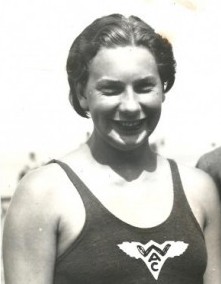
Actually, they hide information like this in books.
Many athletes native to the state have made a “major” Hall of Fame, “major,” according to the talk show host’s definition, meaning those whose members excelled at the highest professional or Olympic levels. A sampler:
BASEBALL / COOPERSTOWN, NY.
Earl Averill: Outfielder, 1975, Snohomish
The “Earl of Snohomish” ranked among the princes of baseball in the 1930s. A six-time All-Star with Cleveland from 1933-38, he hit better than .300 in eight consecutive seasons, finishing with a lifetime mark of .318. His most famous baseball moment occurred on a freakish play in the 1937 All-Star game when his line drive broke the toe of Dizzy Dean, effectively ending Dean’s career. The Veterans Committee selected Averill, who finished his career with the Seattle Rainiers in 1941, to the Hall of Fame in 1975 (see Wayback Machine: The Earl And Pearl of Snohomish).
Ryne Sandberg: Infielder, 2005, Spokane
Sandberg made 10 National League All-Star teams, won nine Gold Gloves and seven Silver Slugger awards during his career with the Chicago Cubs (1982-97). The North Central High (Spokane) product delivered his best year in 1984 when he hit .314 and led the National League with 114 runs and 19 triples and earned the MVP award. Seattle’s baseball history would look a lot different had the Mariners taken a different path in the 1978 amateur draft. That year, they selected OF Tito Nanni with the sixth pick overall. Nanni never reached the majors. The Phillies tabbed Sandberg 505 picks later, eventually trading him to the Cubs.
Ron Santo: Infielder, 2012, Seattle
The Franklin graduate and one-time Sicks’ Stadium ballboy spent most of his career with the Cubs. A National League All-Star nine times, Santo won five Gold Gloves from 1964-68 and hit 342 home runs. Ravaged by diabetes most of his adult life, Santo often talked publicly, and hopefully, about making the Hall of Fame, but died a year before his selection (see Sportspress Northwest: Seattle Native Santo Elected To Hall of Fame).

Non-natives with Washington ties enshrined in the Baseball Hall of Fame: Pitcher Amos Rusie (1977), broadcaster Davie Niehaus (2008).
BASKETBALL / SPRINGFIELD, MA.
Bob Houbregs, Center, 1987, Seattle
The only consensus All-America in UW history, the Queen Anne High grad led the Huskies to their only Final Four appearance in 1953 when he was NCAA Player of the Year. Still the holder of 10 school scoring records, the 6-7 Houbregs remains the highest-drafted UW player, going No. 2 overall to the Milwaukee Hawks in 1953. He played professionally for five seasons, retiring with injuries (see Wayback Machine: Bob Houbregs & The ’53 Final Four).
John Stockton, Guard, 2009, Spokane
The Gonzaga Prep/Gonzaga University graduate made 10 NBA All-Star teams in 18 pro seasons, all with the Utah Jazz, and won two Olympic gold medals (1992, 1996). Stockton established NBA records for career assists (15,806) and steals (3,265) and was named one of the 50 Greatest Players in NBA history in 1996.
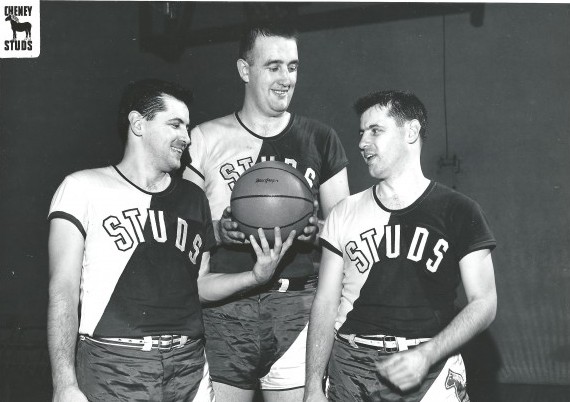
Non-natives with Washington ties enshrined in the Basketball Hall of Fame: Bill Russell (1975), Elgin Baylor (1977), Marv Harshman (1985), Lenny Wilkens (1989), Dennis Johnson (2010), Gary Payton (2013). Wilkens is also enshrined as a coach (1998).
BOWLING / ARLINGTON, TX.
Earl Anthony, 1981, Tacoma
If you were transfixed by bowling on TV in the 1970s – who wasn’t? – and saw the buzz haircut and the black horn-rims, you knew you were about to witness greatness. Anthony was the pre-eminent bowler of his era, perhaps ever. Born in Kent and raised in Tacoma, Anthony was a minor league pitcher until an ankle injury forced him to switch careers. “Square Earl” won 41 PBA titles and became the first pro bowler to win $1 million for a career.
Johnny Guenther, 1986, Seattle
One of the greatest bowlers to come out of Seattle, Guenther won 11 PBA titles, including the PBA National Championship in 1972. Perhaps Guenther’s most famous feat was the perfect game he tossed during the championship round of the 1969 San Jose Open in front of ABC-TV cameras and millions of viewers.

BOXING (INTERNATIONAL)/ CANASTOTA, NY.
Freddie Steele, Middleweight, 1999, Seattle
Most noted now for losing his middeweight title to Tacoma’s Al Hostak July 28, 1938, Steele first won that classification’s championship July 11, 1936 and had five successful title defenses before losing to Hostak. During his career, Steele fought 134 times, winning 120 with four losses and nine draws. Sixty of his wins came via KO (see Wayback Machine: Al Hostak vs. Freddie Steele).
Non natives in the Boxing Hall of Fame: Al Hostak (“Savage Slav,” a native of Minnesota, is enshrined in the World Boxing Hall of Fame).
CYCLING / DAVIS, CA.
Rebecca Twigg, Road/Pursuit, 2002, Seattle
Twigg’s career began in the early 1980s and culminated when she qualified for the 1996 Olympics in Atlanta. In between, Twigg won two Olympic medals (silver in 1984 road race and bronze in 1992 pursuit), six gold and one silver medal in World Championship competition, and a Pan Am gold. She also won 16 U.S. championships, the first at the age of 18.
FIGURE SKATING / COLORADO SPRINGS, CO.
Karol and Peter Kennedy, Pairs, 1991, Seattle
The Kennedy siblings captured five U.S. championships between 1948-52 and took the silver medal at the 1952 Winter Olympic Games in Oslo. The Kennedys also captured the 1950 World Championship, becoming the first Americans to win a world title in pairs.
Cynthia & Ronald Kaufman, Pairs, 1995, Seattle
The Seattle natives won four consecutive United States Figure Skating Championships (1966-69) and twice represented the USA in the Winter Olympics — 1964, 1968.
Non Natives with Washington ties in the Figure Skating Hall of Fame: Rosalyn Sumners, California native reared in Edmonds (2001).
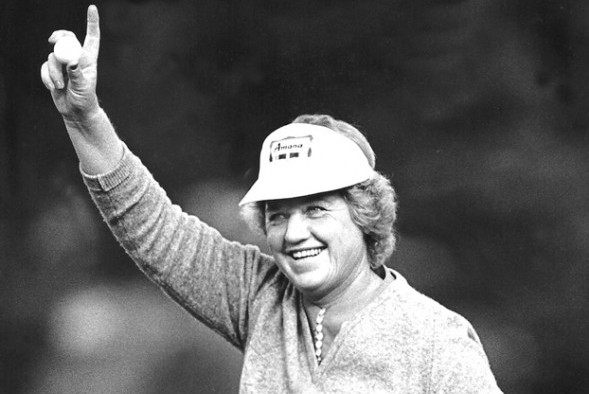
GOLF / ST. AUGUSTINE, FL.
JoAnne Carner, 1982, Kirkland
As Joanne Gundy and later JoAnne Carner, “The Great Gundy” won five U.S. Women’s Amateurs before turning pro at 29 in 1969, then proceeded to win 41 times on the LPGA Tour. She won the U.S. Women’s Open twice (1971, 1978), the LPGA Player of the Year award three times (1974, 1982, 1982) and the Vare Trophy five times (1974, 1975, 1981, 1982, 1983). Carner is the only woman to win the U.S. Junior Girls, the U.S. Women’s Amateur and the U.S. Women’s Open.
Fred Couples, 2013, Seattle
Most famous for winning the 1992 Masters, Couples produced 15 PGA Tour victories during a career in which he was twice the Player of the Year (1991-92), the leading money winner (1992) and a two-time Vardon Trophy recipient (1991-92). Couples has also won three times in the European Tour, eight times on the Champions Tour, and five times in the Skins Game.
GYMNASTICS / INDIANAPOLIS
Joyce Tanac, All-Around, 1990, Seattle
Tanac, who competed for the Seattle YMCA and University of Washington, earned her spot in the U.S. Gymnastics Hall of Fame in large part because of her performance at the 1969 AAU National Championships. She made a clean sweep of all five events, winning golds in the all-around, balance beam, floor exercise, uneven bars and vault. Tanac began tumbling in Seattle at age 10.

MOTOR SPORTS / DETROIT.
Chip Hanauer, Power Boats, 1995, Seattle
Hanauer won a record 12 American Power Boat Association Gold Cups (1982-99), including seven in a row, and finished his career with 81 victories, No. 2 all-time. Hanauer’s dozen APBA victories came on five different waterways, including the Detroit River, Ohio River, Columbia River, Lake Washington and San Diego’s Mission Bay. Until Hanauer, no driver had dominated the “Indianapolis 500 of unlimited hydroplane racing” more than Bill Muncey, who recorded eight wins between 1956-79.
Ted Jones, Power Boats, 2003, Seattle
Jones designed and drove Slo-Mo-Shun IV, the first prop-riding thunderboat to run successfully. Called the “Father of Hydro Racing in Seattle” by www.thunderboats.org, Jones won the 1950 Gold Cup on the Detroit River, a victory which gave the Seattle Yacht Club the right to host in Seattle the following year. That race launched the hydroplane tradition in Seattle (see Wayback Machine: Ted Jones Launches A Seattle Tradition).
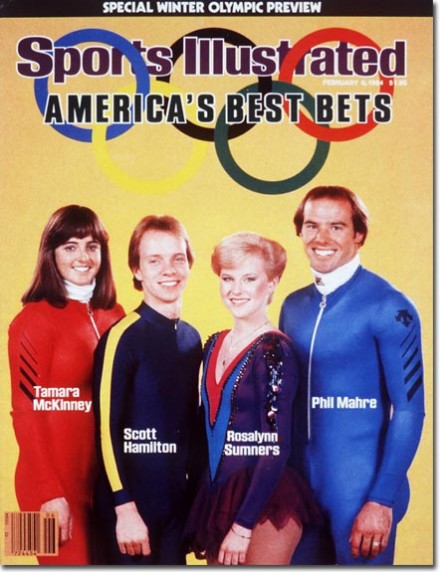
Tom Sneva, Open Wheel, 2005, Spokane
Sneva, the first man to break the 200 mph barrier at the Indianapolis Motor Speedway, won the pole for the Indy 500 three times (1977, 1978, 1984) and captured the race in 1983. In three other years, 1977, 1978, 1980, Sneva finished second. In addition to his win at Indy, Sneva captured two USAC national championships (1977-78). Sneva retired with 13 Indy Car wins and 14 poles.
Non-natives with Washington ties enshrined in the Motorsports Hall of Fame: Bill Muncey (1989), Dean Chenoweth (1992), Ron Musson (1993).
U.S. OLYMPIC / COLORADO SPRINGS, CO.
Helene Madison, Swimming, 1992, Seattle
During a 16-month stretch in 1930-31, the Seattle native broke 16 world records at distances from 100 yards to one mile. At the 1932 Olympics, the 19-year-old Madison won gold medals in the 100 and 400 freestyle and anchored the gold medal 4×100 freestyle relay team. Inducted into the U.S. Olympic Hall of Fame in 1992, “Queen Helene” set 117 U.S. and world records during her career (see Wayback Machine: Queen Helene Madison).
Phil Mahre, Alpine Skiing, 1992, White Pass
Mahre entered the Ski & Snowboard Hall of Fame not at the end of his career, but in the middle of it (1981). By the time he made the U.S. Olympic Hall of Fame, Mahre had won three overall World Cup titles (1981-83), an Olympic gold (1984 slalom, Sarajevo), an Olympic silver (1980 slalom, Lake Placid) and a gold at the 1980 World Championships (combined).

John Stockton, Basketball, 2009, Spokane
Stockton was a member of the original “Dream Team” that won gold at Barcelona in 1992 and also a member of the 1996 U.S. squad that won gold at Atlanta. Stockton, a role player in both Barcelona and Atlanta, had an Olympic high seven points against Angola in 1996.
Gail Devers, Track & Field, 2012, Seattle
Despite a career-threatening battle with Graves disease, Seattle-born Devers became a five-time Olympian, three-time gold medalist and one of only two women to win back-to-back titles in the 100 meters. She also won three world outdoor titles and four world indoor titles. Devers was a two-time gold medalist at the 1987 Pan American Games before making her first Olympic team in 1988, the same year she set an American record as a national champion.
PRO FOOTBALL / CANTON, OH.
Turk Edwards, Defensive Tackle, 1969, Mold
A 1930 All-American, Edwards teamed with the great Mel Hein at Washington State University before entering the NFL in 1931 with the Boston Redskins. He quickly became a 60-minute player and made All-NFL in 1932, 1933, 1936 and 1937. Following his career, he was named to the All-Decade team of the 1930s (see Wayback Machine: Holingbery, Hein & Edwards).
Red Badgro, End, 1981, Orilla
Badgro left tiny Orilla to become a three-sport star at USC, after which he joined Red Grange on the 1927 New York Yankees. A superior big-play receiver, he tied for the NFL pass receiving title in 1934, caught the first touchdown pass in an NFL Championship game (1933) and made first- or second-team All-NFL in 1930, 1931, 1933 and 1934. Badgro also played major league baseball for two years with the St. Louis Browns. When he entered Canton, he became, at age 78, the oldest player to do so (see Wayback Machine: Red Badgro, Phenom Of The ‘30s).
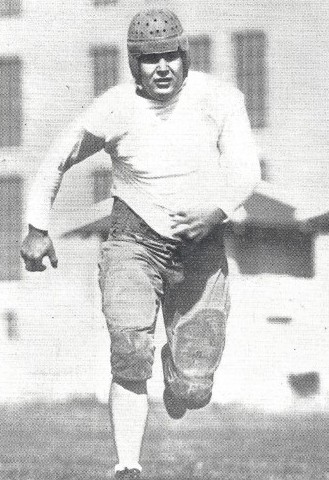
Non-natives with Washington ties enshrined in the Pro Football Hall of Fame: Mel Hein (1963), Hugh McElhenny (1963), Tony Canadeo (1974), Ray Flaherty (1976), Arnie Weinmeister (1984), Steve Largent (1995), Warren Moon (2006), Cortez Kennedy (2012).
ROWING / MYSTIC, CT.
Richard Wailes, 1959, Edmonds
Wailes graduated from Yale and was part of two USA gold-medal shells, the eight in 1956 in Melbourne and the four without cox at Rome in 1960. That team included John Sayre and two other rowers from the Lake Washington Rowing Club. For many years, Wailes held the distinction of being the only Washington state man to win rowing golds in consecutive Olympics. After his career ended, Wailes helped form “Sing-Out ’65,” which became “Up With People.” He died in 2002 while rowing on Lake Washington.
Ted Garhart, Stroke, 1972, Seattle
Between 1939-42, the stroke of the Washington crew never lost a race, a feat unmatched in the 100-plus-year history of the Husky rowing program. The Garfield High alum stroked the UW to IRA national championships in 1940-41 and made the National Rowing Hall of Fame in 1972. Due to the cancellations of the 1940 and 1944 Olympic Games (World War II), Garhart missed a chance to compete at the highest level of his sport.
Donald Grant, Cox, 1972, Seattle
Grant served as captain and coxswain on Washington’s 1923 Intercollegiate Rowing Assn. championship crew, coached by Rusty Callow. Although a member of the varsity eight, he entered the Rowing Hall of Fame as an individual athlete the same year as Ted Garhart.
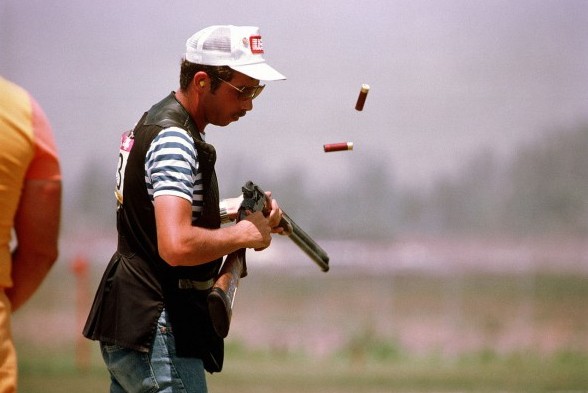
Mary and Elizabeth McCagg, 2012, Kirkland
Mary rowed on nine national teams and in the finals in the women’s eight at the 1992 and 1996 Olympic Games. She also won golds at the 1995 World Rowing Championships and 1995 Pan Am Games. Elizabeth also made nine U.S. teams and was a three-time Olympian, rowing in the finals of the women’s eight in 1992, 1996 and 2000. She won five world championships medals, including gold in the women’s eight at the 1995 World Rowing Championships. The twins attended Lakeside School in Seattle and graduated from Harvard, which inducted them in its Rowing Hall of Fame in 2004.
SHOOTING / COLORADO SPRINGS, CO.
Matt Dryke, Skeet, 2004, Sequim
Dryke grew up in Sequim on a 40-acre spread and by the time he joined the U.S. Army, as an 18-year-old in 1977, he already was an accomplished sport shooter and trick-shot artist. He even appeared on the TV program “That’s Incredible” “and shot a round of skeet from his hip while pedaling a unicycle, hitting 24 of 25 targets. Dryke became an Olympian for the first time in 1980, when the U.S. boycotted the Games. Dryke had a spectacular run up to the 1984 Games, winning the 1981 Championship of the Americas with a world-record score, the 1982 World Shooting Championship, and the 1983 Pan Am Games with another world record. In the Olympics, Dryke fired at 200 clay pigeons, hitting 74 of 75 on each of the first two days and all 50 the final day. His score of 198 out of 200 enabled him to become the first American to win gold in skeet.

Lauri Meili, 3-Bore Rifle, 2004, Cheney
The Eastern Washington University graduate won gold in 3-position rifle at the 1992 Olympics in Barcelona, where she set three records. So accomplished a shooter was she that the Air Force Academy hired her as the men’s rifle coach.
SKI/SNOWBOARD / ISHPEMING, MI.
Gretchen Fraser, Alpine Skiing, 1960, Tacoma
Fraser was the first American to win an Alpine gold medal, collecting it in 1948 in San Moritz. Fraser (born 1919) launched her Alpine career at Paradise on the south slopes of Mount Rainier in December of 1932. Under the tutelage of Otto Lang, she became a proficient racer and later competed on the ski team at University of Puget Sound. Fraser made her first Olympic team in 1940 when they were cancelled due to World War II and her second in 1948 when the Games resumed. A week shy of her 29th birthday, Fraser became the first American (man or woman) to win an Olympic gold medal in skiing, taking the slalom. She also won a silver in combined.
Susan Corrock, Alpine Skiing, 1976, Seattle
The two-time U.S. champion in downhill was born in Seattle, skied as a youth at Snoqualmie Pass and later affiliated with Sun Valley Ski Club. She made her World Cup debut in January of 1970 at age 18 and won a bronze in downhill at the 1972 Winter Olympics in Sapporo, Japan, the only podium of her international career. She competed on the World Cup circuit for four years, retiring in 1973.
Phil Mahre, Alpine Skiing, 1981, White Pass
During his relatively short World Cup career, Mahre won 27 races, still third on the all-time U.S. list behind Bode Miller and Lindsay Vonn. He finished in the top three in World Cup overall competition six times.

Steve Mahre, Alpine Skiing, 1984, White Pass
Fraternal twin Steve won two national slalom titles and the 1983 World Championship. He concluded his career the same day as brother Phil, finishing with a slalom silver in 1984 at Sarajevo.
Debbie Armstrong, Alpine Skiing, 1984, Seattle
Armstrong’s victory in the giant slalom at the 1984 Games in Sarajevo – the only win of her pro career – came as such a shock that Sports Illustrated ran her photo on the cover of the magazine.
SOCCER / ONEONTA, NY.
Michelle Akers, Midfielder/Forward, 2004, Shoreline
A three-time All-America at Shorecrest High and a four-time All-America at Central Florida, Akers’ major success came at the international level. She played for the first U.S. national team in 1985, dominated the 1991 World Cup in China (10 goals), and was part of the USA’s gold medal-winning team at the 1996 Olympics. FIFA named her its Female Player of the Century in 2002.
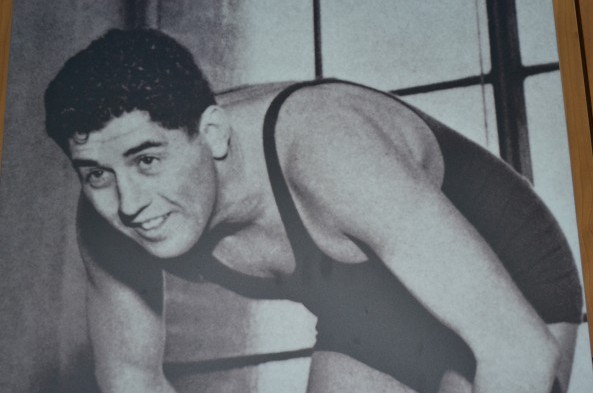
SWIMMING / FORT LAUDERDALE, FL.
Helene Madison, Sprints, 1966, Seattle
Only 19 when she won three golds in the 1932 Olympics in Los Angeles, Madison could have opted to continue her amateur career, but turned pro (she gave swimming exhibitions) because she needed the money. Her attempts to become an actress and nightclub singer failed and she died in poverty.
Jack Medica, Sprints, 1966, Seattle
Medica never lost a race in NCAA competition. In 1935, he entered the national meet and swept three titles at 220, 440 and 1,500 yards, repeating his 1934 sweep. At the 1936 Olympics in Berlin, he won a gold and two silver medals. Like Helene Madison, Medica attended Seattle’s Lincoln High School.

Kaye Hall, Backstroke, 1979, Tacoma
Hall announced herself to the swimming community in 1967 when, as a 16-year-old, she earned a silver in the 100 backstroke at the Pan Am Games in Winnipeg. In case anyone missed her coming out, three months later Hall became the first woman to break the one-minute barrier in the 100 back. Hall had a brief competitive career, retiring in 1970. But she packed her four years with massive achievement: three Olympic medals (2 gold, 1 silver), two world records, six American records, three national AAU titles, five Canadian championships, and three golds at the World University Games.
Candie Costie, Synchronized Swimming, 1995, Seattle
In addition to winning a duet gold medal with Traci Ruiz at the 1984 Olympics in Los Angeles, Costie received a duet gold at the 1983 Pan Am Games in Caracas, Venezuela and a silver at the 1982 World Aquatic Championships in Guayaquil, Ecuador.
Mary Wayte, Freestyle, 2000, Mercer Island
Although raised on Mercer Island, Wayte did most of her swimming at the University of Florida. At Los Angeles in 1984, Wayte defeated archrival Sippy Woodhead in the 200 freestyle final, then added another gold as a member of the 4×100 freestyle relay team. Wayte returned in 1988 and won silver as a member of the 4×100 medley relay and a bronze as a member of the 4×100 freestyle relay.
THOROUBRED RACING / SARATOGA SPRINGS, NY.
Albert Johnson, Jockey, 1971, Spokane
Johnson began his career in 1917 at Playfair Race Track in Spokane and went on to make the Hall of Fame by winning the Kentucky Derby twice (1922 and 1926), and the Belmont Stakes twice (1925 and 1926). His notable mounts included Morvich, Bubbling Over and Crusader, and his major non-Triple Crown wins included the Hopeful (1921), Coaching Club American Oaks (1923), Champagne (1925), Withers (1925) and Dwyer stakes (1925).
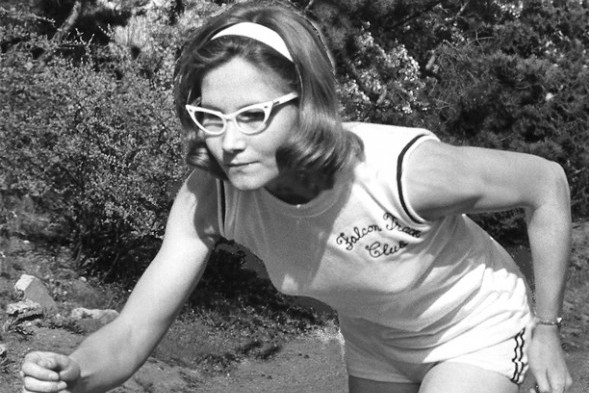
TRACK AND FIELD / INDIANAPOLIS
Doris Brown, Middle Distances, 1990, Tacoma
Since 1932, only two women have won the World Cross Country Championship five times, Seattle Pacific’s Brown and Norway’s Grete Waitz. Brown became the first in 1967 when she triumphed at Barry, Wales. She added four more titles in 1968 at Blackburn, England; in 1969 at Clydebank, Scotland; in 1970 at Frederick, Md.; and in 1971 at San Sebastian, Spain, Even Waitz didn’t win the race five consecutive years.
Charlie Green, Sprints, 1992, Seattle
An O’Dea High product, Green became one of the world’s greatest sprinters after matriculating to the University of Nebraska. He won two NCAA 100-meter titles in 1965-66 and the same event both years at the AAU National Championships. In 1968, Greene twice broke the 100-meter world record. He competed in the 1968 Summer Olympics in Mexico City and won a gold in the 4×100 relay. At O’Dea, he had a best clocking of 9.5 seconds for 100 yards.
Gerry Lindgren, Middle Distances, 2004, Spokane
A Rogers graduate, Lindgren won 11 of the 12 NCAA cross-country events he contested while a student at Washington State, set a six-mile world record in 1965, held national records at 3,000 and 5,000 meters, and was national champion at 10,000. Nothing Lindgren did gained him more enduring fame than his performance in the USA-USSR track meet when, as largely unknown 17-year-old in 1964, he outran two seasoned Russians, Leonid Ivanov and Anatoly Dutov, to win the 10,000 in front of 50,515 at the L.A. Coliseum.
—————————————
Many of the historic images published on Sportspress Northwest are provided by resident Northwest sports history aficionado David Eskenazi. Check out David’s Wayback Machine Archive. David can be reached at (206) 441-1900, or at seattlesportshistory@gmail.com

2 Comments
Bob Houbregs was born in Vancouver, Canada.
you are correct. my bad.